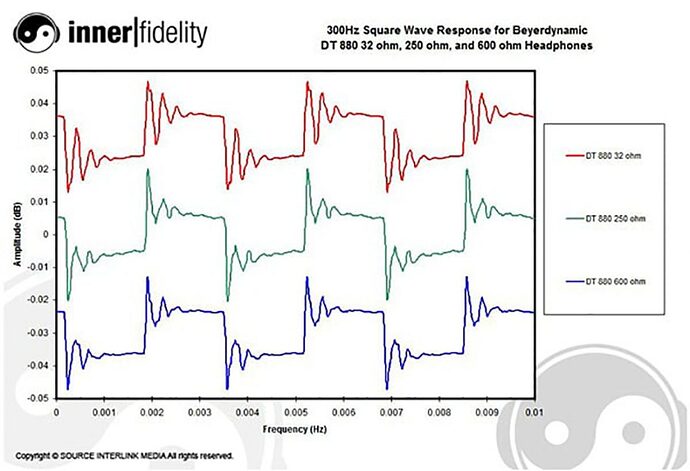Why are some Headphones High or Low Impedance?
Headphones with impedance greater than 100 ohms are typically older or professional studio specific designs. Pre-1990s receivers and pro audio equipment often used resistors to attenuate the speaker output power (wattage) to create a simple and inexpensive headphone circuit.
These headphone circuits consequently worked best with high impedance headphones. In some cases, high impedance headphones were designed to chain multiple pairs in parallel for pro studio applications. Without getting too heavily into the math behind it, the high impedance load preserves the source output voltage to be able to drive multiple pairs of headphones.
600 ohm designation on Beyerdynamic DT880 plug.
This was so prevalent that even as recently as 1996, the standard recommended source output resistance was 120 ohms, and went so far as to claim that source impedance had very little effect on the performance.
Stereophile did not mince words with their opinion of that standard and claim.
“Whoever wrote that must live in a fantasy world. Many of the headphones currently available… typically display a quite wide variation of impedance with frequency.”
Most modern headphones are designed to appeal to as wide a market as possible, and that means they must play well on mobile devices. The sale of hundreds of millions of battery powered music players, including the ubiquitous iPod and more recently smartphones, has made lower impedance (around 32 ohms) headphones the norm.
Headphone Models with Multiple Impedances
Customarily, a particular headphone model is only available in a single impedance. Beyerdynamic is one of the few (if perhaps the only) major company that produces multiple versions of the same model, differing only by impedance: 32, 250, or 600 ohm versions of the DT880 and DT990 headphones, and 32, 80 or 250 ohm versions of the DT770.
Beyerdynamic DT880 headphone comparisons from INNERFIDELITY
As you can see the versions do not perform equally.
“The above graphs show the square wave and impulse responses of the three DT880 impedance headphones. Here you can see that the 32 ohm DT 880 rings markedly more than the other two headphones.” – InnerFidelity
Steve Guttenburg of CNet explained:
“The impedance of a headphone is largely determined by the driver’s voice coil, and for Beyerdynamic’s high-impedance models the voice coil’s wire is super-thin, just 0.018mm, half the thickness of a human hair. Beyerdynamic’s Senior Product Manager Gunter Weidemann explained…
The thinner wires have more windings (layers of wire) on the voice-coil than the lower-impedance Beyerdynamic headphones, which have thicker and heavier, easier-to-manufacture voice coils. The lower moving mass of the 250- and 600-ohm headphones’ voice coils is lighter than the 32-ohm models, and the lower mass is part of the reason high-impedance headphones sound better. The smaller diameter of the 600-ohm voice coil wires allows the wires to fit tighter, so there’s less air between the windings, and that makes the electromagnetic field of the voice coil stronger. All of that reduces distortion for the high-impedance versions compared with the low-impedance headphones.”
Beyerdynamic DT770 in 32, 80 and 250 ohm versions.
If properly matched to an appropriate amplifier, it is possible to achieve an enhanced quality of sound with high impedance headphones, at least with specific designs like the Beyerdynamic models above. Please don’t take this to mean that excellent sounding low impedance headphones do not exist. This is just one company’s approach.
stole this off of https://www.headphonesty.com/2019/04/headphone-impedance-demystified/


